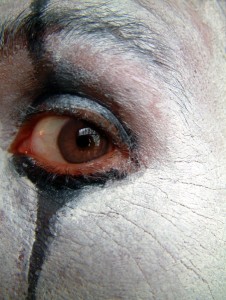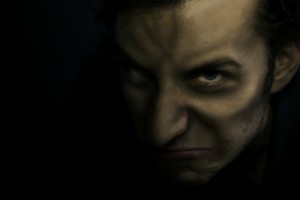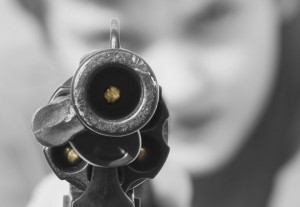Yesterday Clare asked us to describe our notion of the ‘ideal’ villain in fiction.
I’ll be honest—when I pick up a thriller, I want the slayer to be super-sized. My killer’s got to be so cold and bad-ass, he’s doing the Monster Mash all over the page, leaving behind a trail of bloody footprints.
Fiction-wise, that makes Hannibal Lecter my kind of evil doer. Also Dexter Morgan of Darkly Dreaming Dexter—and Dexter’s actually likeable as he plunges the blade into his victims.
I don’t know why I prefer to read about fictional villains who are larger than life. Maybe it’s because I came of age in the seventies, an era when serial killers seemed to be stalking the nation’s youth as well as our collective psyche via the nightly news. Ted Bundy, David Berkowitz, John Wayne Gacy, and later the BTK Killer—each psycho’s saga chilled me to the bone. I started to dwell on all the ways I could possibly die at the hands of a cold sociopath. I probably got way too carried away with my projections, to the point that I’d scan the faces of charming, needy young men and smiling clowns, searching for signs of a hidden killer within.
It’s the recreation of that goose-bump factor that gets my reader’s juices flowing these days. But I also know that there’s no lack of chill potential in “everyday” murders. To do some research for today’s blog post, this morning I pulled a book off my shelf called Scene of the Crime, Photographs from the LAPD Archive. It’s a picture book filled with vintage images of murder victims and crime scenes.
One photo and its caption from 1951 haunted me all day. A platinum blonde is shown slumped in the passenger seat of an automobile. A black rivulet of blood streams from one ear. According to the caption,her name was Libby. She’d been shot four times by her boyfriend, who’d left a message written on the back of a check:
“She died instantly,” her sweetheart killer wrote. “…painlessly and mercifully, happy with joyous thoughts that could never be brought to reality…The back of her head faced me. I looked at her beautiful new silver blonde hair and I squeezed the trigger…I have no beliefs other than that the end fully justifies the means. And a few paltry dollars made her so happy!”
Now that’s chilling.
Breaking News: Last week’s winner of DYING TO BE THIN
Seanchai won last week’s contest for a copy of DYING TO BE THIN over at the Kill Zone!
Seanchai, send me your mailing address and I’ll mail you a signed copy this week! (I tried to post a notification to your blog but I couldn’t get it to post). Best, Kathryn


